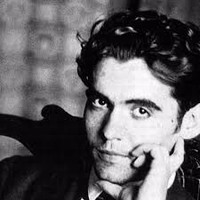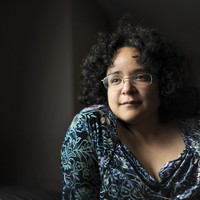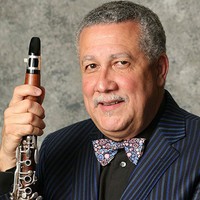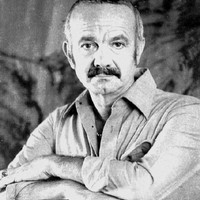Piazzolla’s Four Seasons



The Mexican composer and violinist Silvestre Revueltas was a fascinating musician whose contributions have come to be more and more appreciated in recent decades. He studied in Mexico and the United States, and he further honed his sense of orchestration during his tenure as the Assistant Conductor of the Mexican Symphony Orchestra from 1929 to 1935. His politics aligned him with the anti-Fascist Republicans in Spain, where he toured in 1937. Just as he began to establish an international foothold, he died at the age of 40 from pneumonia exacerbated by his alcoholism.
For one of his gigs providing music for radio broadcasts, Revueltas created 8 x radio for an eight-piece ensemble of clarinet, bassoon, trumpet, percussion and four strings. He described the cheeky score as “an algebraic equation with no possible solution, unless you have deep knowledge of mathematics. The author has tried to solve the problem by means of musical instruments, with moderate success.” One American who was deeply impressed by Revueltas was Aaron Copland, who began visiting Mexico in 1933, and it’s easy to hear how those influences permeated Copland’s El Salón México from 1935 and all his classic works of homespun Americana that followed.
Aaron Grad ©2022
 Watch Video
Watch Video
When Gabriela Lena Frank appeared on a list of “the top 35 female composers in classical music” compiled in 2017 by The Washington Post, chief critic Anne Midgette pointed to the significance of Frank’s “multiculturalism” and her practice of “mingling folk feeling with compositional sophistication.” Born in Berkeley to a mother of Peruvian-Chinese heritage and a father from a Lithuanian-Jewish background, Frank has embraced her ancestry, especially her connection to Peru, where she has traveled extensively. She wrote the following program note for Leyendas: An Andean Walkabout, a score she created for string quartet in 2001 and arranged for string orchestra in 2003.
Leyendas: An Andean Walkabout draws inspiration from the idea of mestizaje as envisioned by Peruvian writer José María Arguedas, where cultures can coexist without the subjugation of one by the other. As such, this piece mixes elements from the western classical and Andean folk music traditions.
Toyos depicts one of the most recognizable instruments of the Andes, the panpipe. One of the largest kinds is the breathy toyo which requires great stamina and lung power, and is often played in parallel fourths or fifths.
Tarqueda is a forceful and fast number featuring the tarka, a heavy wooden duct flute that is blown harshly in order to split the tone. Tarka ensembles typically also play in fourths and fifths.
Himno de Zampoñas features a particular type of panpipe ensemble that divides up melodies through a technique known as hocketing. The characteristic sound of the zampoña panpipe is that of a fundamental tone blown fatly so that overtones ring out on top, hence the unusual scoring of double stops in this movement.
Chasqui depicts a legendary figure from the Inca period, the chasqui runner, who sprinted great distances to deliver messages between towns separated from one another by the Andean peaks. The chasqui needed to travel light. Hence, I take artistic license to imagine his choice of instruments to be the charango, a high-pitched cousin of the guitar, and the lightweight bamboo quena flute, both of which are featured in this movement.
Canto de Velorio portrays another well-known Andean personality, a professional crying woman known as the llorona. Hired to render funeral rituals even sadder, the llorona is accompanied here by a second llorona and an additional chorus of mourning women (coro de mujeres). The chant Dies Irae is quoted as a reflection of the comfortable mix of Quechua Indian religious rites with those from Catholicism.
Coqueteos is a flirtatious love song sung by gallant men known as romanceros. As such, it is direct in its harmonic expression, bold, and festive. The romanceros sing in harmony with one another against a backdrop of guitars which I think of as a vendaval de guitarras (“storm of guitars”).
—Gabriela Lena Frank
Aaron Grad ©2022

Before he became an international legend of Latin jazz, the Cuban saxophonist and bandleader Paquito d’Rivera studied classical clarinet in Havana and played with the Cuban National Symphony Orchestra. Much of his work as a composer of concert music re-engages with the musical traditions of his homeland, and it often features the clarinet and other woodwinds. He composed the wind quintet Aires Tropicales in 1994, using traditional dances and other Cuban elements. He described the movements as follows: “Alborada, a slow introduction; Son, with an ostinato Latin bass line in the bassoon and horn; Habañera, a trio movement for flute, clarinet and bassoon in the style of Ravel; Vals Venezolano, a lively Venezuelan waltz; Afro, which begins with a flute solo, followed by an energetic, rhythmic 6/8 dance over an African ostinato; and Contradanza, an upbeat Cuban dance honoring Ernesto Lecuona.”
Aaron Grad ©2022

Astor Piazzolla merged Argentinean popular music and 20th-century classical styles to spearhead the revolutionary movement known as “new tango.” Born in Argentina, Piazzolla spent much of his childhood in New York. At age eight, he took up the bandoneón, a South American folk instrument in the accordion family. He moved back to Argentina as a teenager and joined traditional tango orchestras, soon establishing a career in Buenos Aires. Besides performing in dance bands and arranging songs for the large ensembles, Piazzolla also pursued a separate path composing concert music. Like many aspiring composers of his generation, he found his way to the legendary teacher Nadia Boulanger in Paris, who encouraged him to drop his Igor Stravinsky/Bela Bartók/Maurice Ravel approximations and embrace his true voice in tango.
Before long, Piazzolla assembled the group that would be the platform for most of his groundbreaking work. The Quinteto Nuevo Tango (New Tango Quintet) featured Piazzolla on bandoneón, plus violin, bass, piano and electric guitar. It was for this group that Piazzolla wrote his Quatros Estaciones Porteñas (Four Seasons of Buenos Aires) between 1964 and 1970. As with many of his small-group compositions, the Four Seasons have been reshaped by various arrangers for classical ensembles. The version for solo violin with strings, arranged by Russian composer Leonid Desyatnikov, stands as an impassioned response to Vivaldi’s most famous violin concertos, the Four Seasons. The percussive, dancing origins of Piazzolla’s music are on display throughout, and Desyatnikov’s arrangement makes ample use of the string ensemble’s extended techniques and unconventional sound effects to carry the rhythmic drive of the music.
Aaron Grad ©2022
Get driving directions and find nearby parking.
Find dining options close to the venue.
View seating charts to find out where you'll be seating.
SPCO concerts are made possible by audience contributions.
For exclusive discounts, behind-the-scenes info, and more:
Sign up for our email club!
